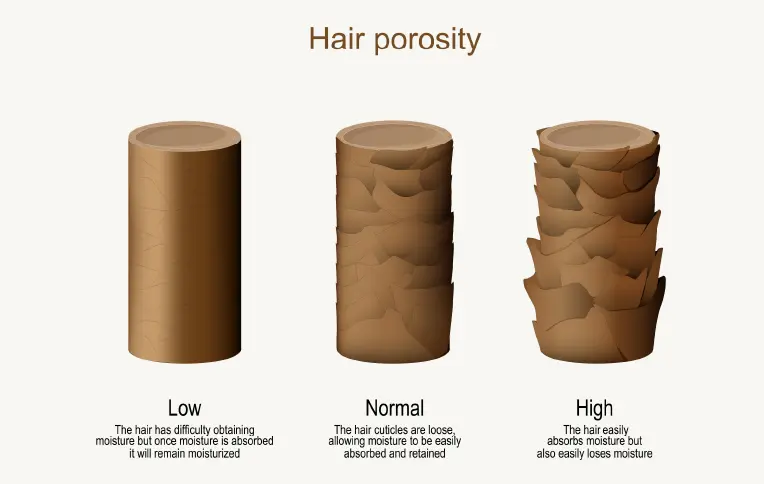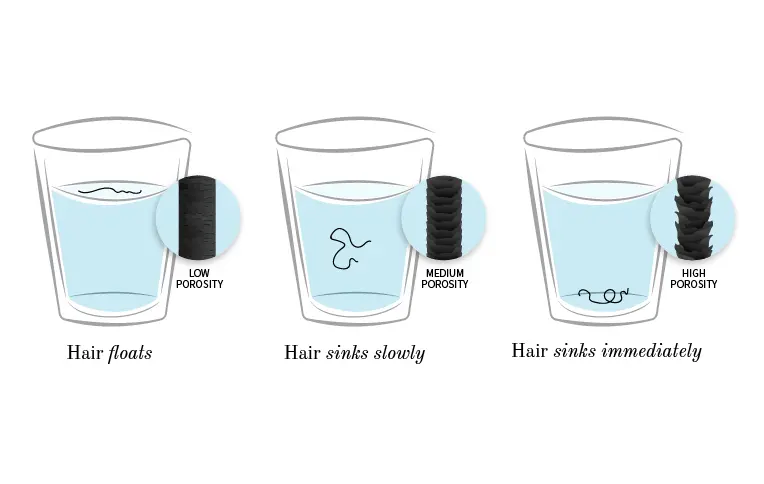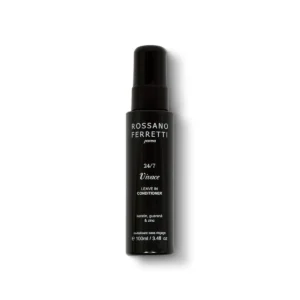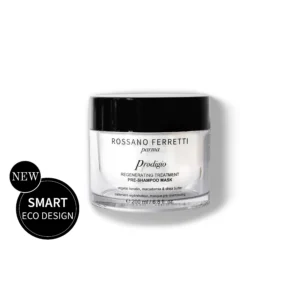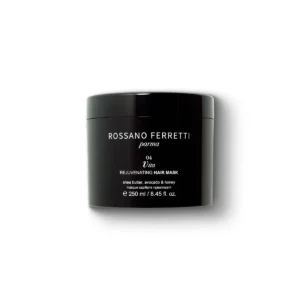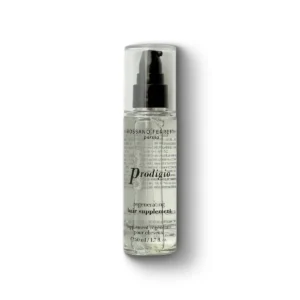What is Hair Porosity and Why Does it Matter?




In this article:
- What is hair porosity?
- Causes of Different Porosity Levels
- How to Test Your Hair’s Porosity?
- Understanding Your Porosity Type — and Choosing the Right Products
- Final words
As one navigates the complex world of hair care, you may find yourself asking: What is hair porosity? Why is it important? Understanding hair porosity will revolutionize the way you care for your crowning glory.
What is hair porosity?
Hair porosity is the measure of your hair’s ability to absorb and retain moisture. This is largely determined by the condition of the hair’s outer layer, also known as the cuticle. When the cuticle layers are tightly packed together, your hair has low porosity. If these layers are lifted or separated, your hair possesses high porosity.
Hair with low porosity has a more challenging time allowing moisture and oils in, but once absorbed, it retains this moisture quite well. On the other hand, high porosity hair absorbs moisture and oils easily but struggles to keep them locked in. This crucial difference plays a significant role in determining the products and care routines best suited for your hair.
Causes of Different Porosity Levels
While porosity can be genetic, it is also heavily influenced by environmental exposure and chemical or mechanical damage.
- High porosity may result from frequent coloring, bleaching, excessive heat styling, or environmental stress like sun and pollution.
- Low porosity is often hereditary, but product build-up can exacerbate its resistance to moisture.
How to Test Your Hair’s Porosity?
Testing your hair porosity is surprisingly straightforward and can be done at home with the ‘float test’. Simply take a few strands of your clean hair and place them in a bowl of water. Watch the hair for a couple of minutes – if it sinks, your hair has high porosity. If it floats, your hair has low porosity.
Another method is the ‘slide test’. Slide your fingers up a strand of hair, moving from the end towards the root. If the strand feels smooth, you likely have low porosity hair. If it feels bumpy or has a certain grit to it, your hair is probably of high porosity.
Understanding Your Porosity Type — and Choosing the Right Products
Hair porosity is typically classified into three types: low, normal, and high.
– Low Porosity Hair
Your hair is naturally resistant to water and products. It may take a long time to get wet in the shower, and you might notice conditioner or oils just sitting on top of your strands rather than soaking in.
What Your Hair Needs:
- Lightweight, water-based formulations that don’t overwhelm the cuticle
- Ingredients like aloe vera, green tea and rice proteins
- Clarifying shampoos or scalp scrubs once a week to remove build-up
- Treatments applied with gentle heat (like a warm towel or hooded dryer) to open the cuticle


What to Avoid:
- Heavy oils and thick butters (like coconut oil or shea butter)
- Over-conditioning (which can cause build-up and limpness)
– Medium/Normal Porosity Hair
This is the sweet spot. Your hair absorbs moisture and holds onto it well. You may find that products work reliably and your hair responds to most treatments with little drama.
What Your Hair Needs:
- A balanced routine: hydration and strength in rotation
- Protection from heat and UV to maintain its healthy porosity
- Lightweight leave-ins or serums to keep cuticles smooth and soft
Even though medium porosity is the easiest to manage, it still needs care—especially if you regularly use heat tools or live in an environment with extreme weather changes.


– High Porosity Hair
This hair type drinks up moisture fast but struggles to keep it in. You may find your hair feels dry minutes after conditioning, looks frizzy or dull, tangles easily, or breaks more than usual. This porosity is often a result of damage—like from bleaching, heat, or environmental exposure—but some people are naturally high porosity.
What Your Hair Needs:
- Rich, nourishing formulas that help seal the cuticle
- Layered hydration: apply a water-based mist, then a creamy conditioner, followed by a sealing oil
- Rebuilding and bonding treatments with protein or amino acids to reinforce weak strands
- Protective serums and leave-ins to smooth and shield the hair’s surface


What to Avoid:
- Alcohol-heavy stylers (which can evaporate moisture)
- Harsh shampoos or frequent washing
- Brushing wet hair without detangling support
Final words
Most people choose products based on hair goals—volume, shine, smoothness. But the effectiveness of those products depends on porosity. Once you understand how your hair receives and retains what you apply, every mask, conditioner, or oil becomes more targeted and effective.
Porosity empowers you to ask better questions, select smarter formulas, and see faster, longer-lasting results.




